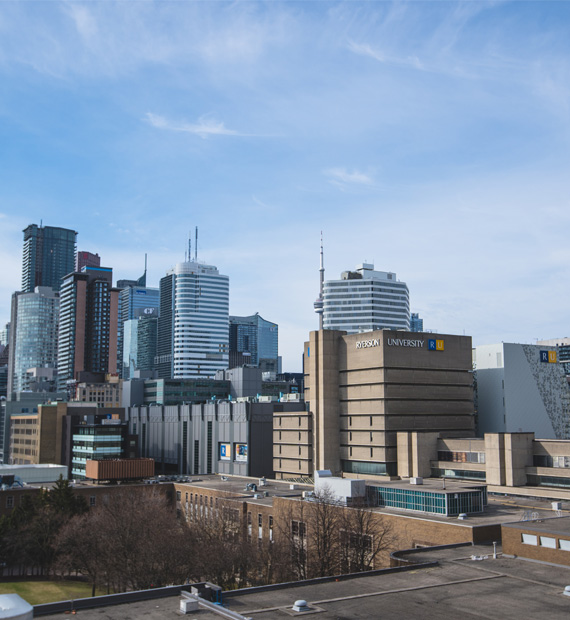WSIB Performance

TMU’s goal continues to be to eliminate injuries on campus completely. We move towards this goal by creating a safe and healthy work, learning and research environment that contributes to our community’s wellbeing.
Overall, this past year, TMU’s WSIB performance has improved with a decreasing number of lost-time injuries and days lost.

Comparing WSIB performance from 2016 to 2019
This chart compares Ryersons WSIB performance from 2016-2019 for critical injuries, days lost, lost-time injuries, severity rate and performance index.
TMU’s WSIB performance has a decreasing number of lost-time injuries and days lost.
WSIB costs and experience rating
In 2019, TMU’s annual workplace safety insurance premium was approximately $1.1M.
The WSIB New Experimental Experience Rating (NEER (external link) ) program provides rebates/surcharges based on the Performance Index (PI). The PI is the NEER costs (which includes the actual claim costs, projected future cost and WSIB’s overhead costs) compared to the expected costs for firms of comparable size within the education sector. If the PI is lower than 1, the employer is eligible for a rebate; if higher, the employer receives a surcharge. TMU received a rebate of $347k in 2019.
$1.1M
Premium
$347k
Rebates

Understanding WSIB performance statistics
Critical injuries
Critical injuries are defined by the Ontario Occupational Health and Safety Act, and must be reported to the Ontario Ministry of Labour (MOL).
In 2019 there were eight critical injuries on campus which were reported to the Ontario Ministry of Labour. Of the 8 critical injuries, 3 happened to staff, 2 to visitors and 3 to students.

Staff and visitor injuries:
- all the injuries that happened to staff and visitors were related to slips, trips and falls.
Student injuries:
- one was a foot injury caused by being hit by a piece of dislodged plexi-glass during a collision of hockey players;
- one involved a fracture of the nose during a basketball game;
- one was a fall that happened to a cheerleader when she fell through a spotter’s arms.

In November 2019, the MOL clarified that only injuries that pose a risk to workers need to be reported. In the future, TMU will not need to report students’ sports injuries or injuries caused by medical conditions.

Days lost
Days lost indicate the number of days an employee was away from work recuperating from a work-related injury.
Human Resources’ Workplace Wellbeing Services, in cooperation with departmental leaders, will continue to strengthen the return-to-work program to further reduce time away from work. Additional initiatives will be introduced in 2020 including a formal modified-duties program

In 2019, there was a steep reduction in the number of days lost compared to 2018, from 227 to 125. This represents a 45% reduction.
Additionally, one case accounted for
87% of the days lost
due to back injury from lifting.

Lost-time injuries (LTIs)
Lost-time injuries lead to time away from work due to the injury. In 2019, there were 10 lost-time injuries. This is the lowest that TMU has documented in the last four years, and a 44% reduction from 2018.

Causes of LTIs
5
Slips, trips and falls
2
Overexertion
3
Other (struck by, burns, etc.)
Lost-time injuries frequency compared to rate group* (educational facilities)
*Employers are classified into rate groups based on similarity of business activities and relative risk for the purpose of charging premiums. TMU university is within the rate group for educational facilities.
This chart compares TMU's Lost Time Frequency rate with other organizations in our rate group from 2015 to 2019. The rate group includes educational facilities.
From 2015 - 2019 TMU had a lower injury rate than other similar organizations, with the exception of in 2017, when we were slightly higher (0.32 compared 0.33 for our rate group). In 2018 and 2019 we were one again lower than our rate group average.

Severity rate
Severity rate is calculated by dividing year-to-date days lost, regardless of accident dates, divided by the full-time equivalent worker multiplied by 100.
In 2019, our severity rate reduced from 3.68 in 2018 to 2.14. This reflects a 42% reduction.


What’s next for workplace injury prevention in 2020
Participation in WSIB’s Health and Safety Excellence Program
In 2020, TMU will participate in the WSIB’s Health and Safety Excellence Program.
In this program, TMU’s EHS team will select between one and five safety objectives to work on during the year, sharing the project content and results with other Ontario universities through the Council of Environmental Health and Safety Officers (CEHSO).
The completion of the safety objectives will be evaluated by a WSIB-approved provider. At the end of the year and upon successful completion of the objectives, TMU will receive recognition in the form of a digital badge and a financial rebate which is a certain percentage of the total WSIB insurance premium.
